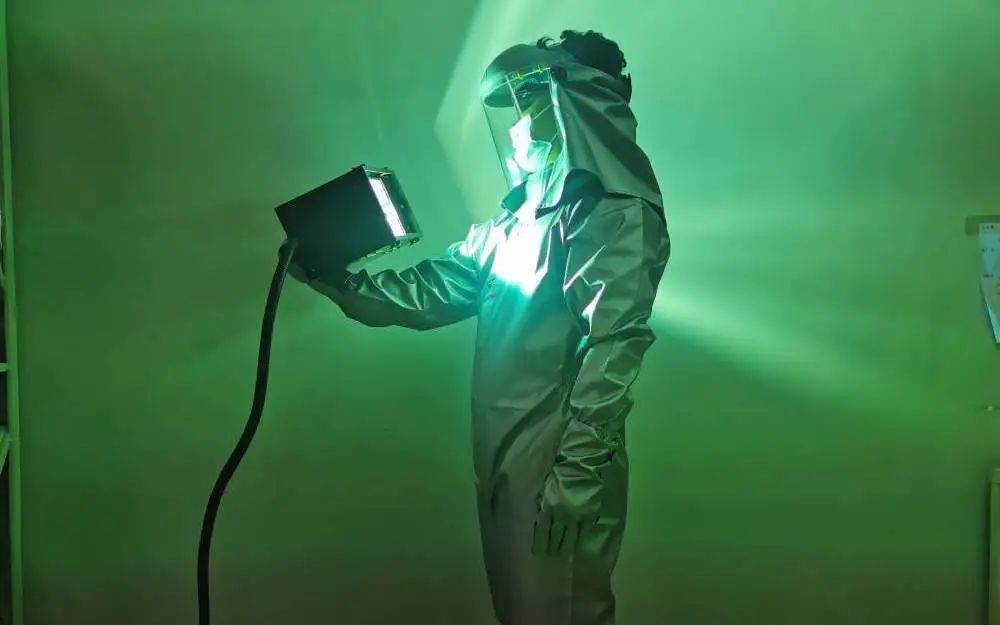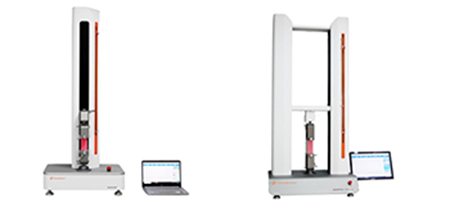Coated fabric: It is a kind of fabric treated by special technology. It can…
3 Factors Influencing the Abrasion Resistance of Car Seat PVC Leather and The Solution
Table of Contents
Quick Takeaways
This article is for PVC leather manufactuers to improve the abrasion resistance performance of their products, or as a guide for PVC leather buyer to distinguish good PVC leather materials for car seat or other applications.
This article introduces the basic formula and performance of PVC leather for car seats, and their effects to the abrasion resistance performance.
Based on the PVC leather of car seats, two test methods of Taber abrasion resistance test and Martindale abrasion resistance test with different test principles are used to check the effect of texture size, content of wear-resistant additives, type and content of plasticizers on the wear resistance of PVC leather.
The appearance change, quality change and gloss change before and after wear were used to characterize it.
The testing results show that:
- Fine texture helps to improve the abrasion resistance of PVC leather;
- The addition of fluorosilicone abrasion additives within 7% can significantly improve the abrasion resistance of PVC leather, and the abrasion resistance will decrease after 7%;
- Plasticization Under the same condition of the agent content, the abrasion resistance of PVC leather with plasticizer 911 is better than DPHP.
- Based on the automobile leather formula, when the plasticizer content increases, the abrasion resistance of PVC leather will be slightly reduced.
Why Abrasion Resistance Test Is Needed For Car Seat PVC Leather?
At present, in order to maintain or achieve brand competitiveness, major car companies are racing to carry out lean cost control.
How to balance cost, performance and perceived quality is an important issue. As an important functional part of the vehicle interior, the vehicle seat is particularly critical for design and material selection and cost control.
PVC artificial leather is a commonly used seat cover material, and it is also the first artificial leather material invented and applied. Many car companies have gradually decreased the amount of genuine leather and microfiber leather materials on the seats and adopted PVC artificial leather as an alternative material, which not only can save a lot of money Cost, and have a similar appearance and touching feeling to real leather.
Artificial leather formulations for automobiles are usually composed of PVC resin, plasticizers, stabilizers, flame retardants, foaming agents, surface treatment agents and base fabrics. The base fabrics usually include knitted fabrics, non-woven fabrics or microfiber fabrics. The production process Generally there are coating method and calendering method. PVC leather for car seats must have certain light aging resistance (light fastness), weather aging resistance, high and low temperature resistance, rubbing resistance, mechanical properties, chemical resistance, abrasion resistance, and environmental protection.
Because different areas of the seat cover have different requirements for the wear resistance of the material, the wear resistance of PVC artificial leather will affect its application distribution on the seat. This article focuses on the research and discussion of the factors affecting the wear resistance of PVC artificial leather for car seats.
Abrastion Resistance Test Methods & PVC Leather Specimen
-
PVC Leather Specimen
This article mainly studies the effects of texture morphology, wear-resistant additives, plasticizing type and content on the wear resistance of PVC leather.
All samples are provided by the same supplier, produced by a coating process, based on the current PVC leather formula that meets the company’s technical standards, and only change certain factors that need to be tested. The specific is listed in Table 1.
| Variable Factors | Factor Details | Controlled Factors |
| Texture(A1#/A2#/A3#) | Fine texture/medium texture/coarse texture | Fluorine-free silicon, DPHP |
| Plasticizer DPHP (B1#/B2#/B3#/B4#) | 39.4%/40.3%/41.2%/42.8% | 7% Fluorosilicone, Fine texture |
| Plasticizer 911 (C1#/C2#/C3#/C4#) | 39.4%/40.3%/41.2%/42.8% | 7% Fluorosilicone, Fine texture |
| Fluorosilicon wear-resistant additives (D1#/D2#/D3#/D4#) | 0%/4%/7%/11.1% | 911, Fine texture |
| Note: The detailed formula not listed here | ||
Table 1 Test Specimen Formula
-
Main Abrasion Resistance Testing Apparatus
Taber Abrasion Tester(CS-10 / 1000 g), Martindale Abrasion Tester (Lissajous figures) Analytical balance, Gloss meter, Color Light Box for valuing the results
-
Abrasion Resistance Testing Methods
Taber Method
Test all samples, and select 3 samples for each group sample. Test according to QB/T 2726-2005 standard. The sample is a round sample with a diameter of 106 mm (with a mounting hole of about 5 mm in the middle). The grinding wheel is CS-10 type, the applied pressure loaded is 1000 g, the rotation speed is 60 r/min, and the count is 1000 times and 2000 times. Record the appearance change and wear value of the sample (in mg). Know more about Taber Abrasion Tester.
Martindale Method
Test all samples following the GB/T 21196.2~4 standard, and prepare 3 samples for each group. The friction medium is the wool abrasive specified in the standard, the sample is a round sample with a diameter of 140 mm, the load is 1600 g, using the Lissajous track, the speed is 60 r/min, and the count is 10 000 times and 20 000 times. Record the appearance change of the sample at the 60° angle to identify the gloss change of the worn area. Know more about Martindale Abrasion Tester.
Evaluation of Abrasion Resistance Results
Effect of texture on abrasion resistance
Conduct the Taber and Martindale abrasion resistance tests on the 3 group of specimen, the testing variable factor is the texture of the PVC leather, table 2 lists the testing results:
| Specimen No. | 1000 Times | 2000 Times | ||
| Abrasion Loss/mg | Appearance | Abrasion Loss/mg | Appearance | |
| A1# | 23.6 | The texture is slightly worn, grade 4/5 | 40.3 | The texture is obviously worn, grade 4 |
| A2# | 26.5 | The texture is slightly worn, grade 4/5 | 42.7 | The texture is obviously worn, grade 4 |
| A3# | 28.7 | The texture is slightly worn, grade 4/5 | 43.4 | The texture is obviously worn, grade 4 |
Table 2 Taber Wear Abrasion Resistance Test Results (Texture Effect)
| Specimen No. | 10000 Times | 20000 Times | ||
| ∆UB (60°) | Appearance | ∆UB (60°) | Appearance | |
| A1# | 1.2 | The surface is significantly brighter | 1.6 | The surface is significantly brighter |
| A2# | 1.6 | The surface is significantly brighter | 1.7 | The surface is significantly brighter |
| A3# | 1.8 | The surface is significantly brighter | 1.8 | The surface is significantly brighter |
Table 3 Martindale Abrasion Resistance Test Results (Texture Effect)
From the data in Table 2 and Table 3, we can tell that as the surface of PVC leather gradually transitions from fine texture to coarse texture, the wear resistance gradually deteriorates, but this trend is not obvious. This may be due to the finer the surface texture of the PVC leather, the smaller the surface “roughness”, and the smaller the friction coefficient between the grinding wheel and the surface of the PVC leather, so the fine-grained PVC leather surface has a slightly better resistance to friction and wear.
The influence of plasticizer content and type on wear resistance
Taber and Martindale abrasion tests were performed on the two different influencing factors of plasticizer type and plasticizer content. The results are shown in Table 4, Table 5, Table 6, and Table 7. From the data in Table 4, Table 5, Table 6, and Table 7, we can tell:
| Specimen No. | 1000 Times | 2000 Times | ||
| Abrasion Loss/mg | Appearance | Abrasion Loss/mg | Appearance | |
| B1# | 11.4 | No obvious change, level 4/5 | 17.7 | No obvious change, level 4/5 |
| B2# | 12.6 | No obvious change, level 4/5 | 20.0 | No obvious change, level 4/5 |
| B3# | 13.3 | No obvious change, level 4/5 | 20.4 | No obvious change, level 4/5 |
| B4# | 14.8 | No obvious change, level 4/5 | 20.9 | No obvious change, level 4/5 |
Table 4 Taber Abrasion Resistance Test Results (Influence of plasticizer DPHP)
| Specimen No. | 10 000 Times | 20 000 Times | ||
| ∆UB (60°) | Appearance | ∆UB (60°) | Appearance | |
| B1# | 0.4 | No obvious change | 0.6 | No obvious change |
| B2# | 0.4 | No obvious change | 0.6 | No obvious change |
| B3# | 0.4 | No obvious change | 0.6 | No obvious change |
| B4# | 0.4 | No obvious change | 0.6 | No obvious change |
Table 5 Martindale Abrasion Resistance Test Results (Influence of plasticizer DPHP)
| Specimen No. | 1000 Times | 2000 Times | ||
| Abrasion Loss/mg | Appearance | Abrasion Loss/mg | Appearance | |
| C1# | 6.6 | No obvious change, level 4/5 | 16.6 | No obvious change, level 4/5 |
| C2# | 7.3 | No obvious change, level 4/5 | 17.1 | No obvious change, level 4/5 |
| C3# | 7.9 | No obvious change, level 4/5 | 18.2 | No obvious change, level 4/5 |
| C4# | 8.3 | No obvious change, level 4/5 | 18.9 | No obvious change, level 4/5 |
Table 6 Taber Abrasion Resistance Test Results (Plasticizer 911 Effects)
| Specimen No. | 10 000 Times | 20 000 Times | ||
| ∆UB (60°) | Appearance | ∆UB (60°) | Appearance | |
| C1# | 0.2 | No obvious change | 0.4 | No obvious change |
| C2# | 0.2 | No obvious change | 0.4 | No obvious change |
| C3# | 0.2 | No obvious change | 0.4 | No obvious change |
| C4# | 0.2 | No obvious change | 0.4 | No obvious change |
Table 7 Martindale Abrasion Resistance Test Results (Effect of plasticizer 911)
As the plasticizer content increases within a certain range, Taber abrasion values all increase to varying degrees, and the increase in the number of wear will result in a significant increase in wear;
With the increase of the plasticizer content within a certain range, the gloss of the test sample surface after Martindale wear does not change significantly, and the surface gloss of PVC leather slightly increases with the increase in the number of wear.
This may be due to the fact that PVC powder and plasticizer are the two largest and most important components in the car seat PVC artificial leather formula. PVC powder mainly provides the “rigidity” of artificial leather, while plasticizer mainly provides the “flexibility” of artificial leather. With the increase of the plasticizer content, the surface flexibility of PVC artificial leather increases, and the almost completely rigid CS10 grinding wheel will produce greater deformation after contacting the surface of the test sample, resulting in an increase in the surface friction coefficient, so the Taber wear will also increase. As the number of wear increases, the amount of wear will be greater.
In Martindale method, a wool cloth is used to contact the test sample, and there is a sponge pad on the back of the wool cloth. The change in the softness of the sample surface caused by a slight change in the plasticizer content can almost be buffered by the grinding head. Therefore, when the plasticizer is increased within a certain range, the surface gloss of the sample does not change, but the surface of the test sample becomes slightly brighter as the number of wear increases.
Comparison of the test results of two plasticizers, DPHP and 911, shows that. At the same plasticizer content, 911 plasticizer has lower abrasion value than DPHP plasticizer Taber, and the surface gloss change after Martindale wear is smaller. This may be due to the fact that although the molecular weight of 911 plasticizer is larger than that of DPHP, the actual processing temperature is higher, and the overall compatibility with PVC powder may be better. In addition, 911 plasticizer contains longer branches, and the plasticizer surface The mobility is lower, and the effect on the adhesion of the coating to the PVC layer is smaller, so the leather with 911 plasticizer has better abrasion resistance.
Content of wear-resistant additives’ influence on PVC wear abrasion resistance
In PVC leather, the content of abrasion aid in the surface layer will affect the abrasion resistance of the test sample. Taber and Martindale abrasion resistance tests were carried out on the samples of the influence factor of fluorosilicone additives. The results are listed in Table 8 and Table 9.
| Specimen No. | 1000 Times | 2000 Times | ||
| Abrasion Loss/mg | Appearance | Abrasion Loss/mg | Appearance | |
| D1# | 19.5 | The texture is slightly worn, grade 4/5 | 30.9 | The texture is obviously worn, grade 4/5 |
| D2# | 11.1 | No obvious change, level 4/5 | 18.7 | No obvious change, level 4/5 |
| D3# | 6.6 | No obvious change, level 4/5 | 16.6 | No obvious change, level 4/5 |
| D4# | 8.9 | No obvious change, level 4/5 | 17.5 | No obvious change, level 4/5 |
Table 8 Taber abrasion resistance test results (PVC leather with abrasion resistance fluorosilicone aid used)
| Specimen No. | 10 000 Times | 20 000 Times | ||
| ∆UB (60°) | Appearance | ∆UB (60°) | Appearance | |
| D1# | 1.2 | The surface is significantly brighter | 1.6 | The surface is significantly brighter |
| D2# | 0.4 | No obvious change | 0.4 | No obvious change |
| D3# | 0.2 | No obvious change | 0.4 | No obvious change |
| D4# | 0.2 | No obvious change | 0.4 | No obvious change |
Table 9 Martindale Abrasion Test Results (PVC leather specimen with abrasion aid fluorosilicone F-SI used)
From the data in Table 8 and Table 9, it can be seen that when the content of fluorosilicone additives in the surface layer of PVC artificial leather is less than 7%, the change of the surface gloss of the test samples after Taber abrasion and Martindale abrasion increases with the increase of the wear resistance additives.
And this change is more obvious when the content of fluorosilicone additives is less than 4%. As the number of Taber wear increases, the wear of each test sample will increase, and as the number of Martindale wear increases, the change in surface gloss will increase. When the content of fluorosilicone additives in the surface layer is between 7% and 11%, the Taber abrasion value increases instead, but the surface gloss of the test sample remains unchanged after Martindale wear.
This may be due to the decrease in the friction coefficient of the test sample surface after adding fluorosilicone additives to the surface layer.
When the addition amount is less than 7%, as the addition amount increases, the surface friction coefficient of the test sample decreases more obviously, so the smaller the Taber abrasion, the smaller the change in the surface gloss of the test sample after Martindale abrasion.
When the content of fluorosilicone additives is 7%~11%, Taber abrasion will increase. This is due to the excessive addition of fluorosilicone additives, which will reduce the adhesion between the wear-resistant coating and the PVC layer and reduce the comprehensive wear resistance of the material; After Matindale abrasion test, the surface gloss of the test sample does not increase significantly. It may be that this reduction in adhesion is not enough to affect the deterioration of Matindale’s test results.
Conclusion
Through the research on the factors of PVC artificial leather for car seats, the following conclusions can be drawn.
- PVC artificial leather, the smaller the texture, the higher the surface abrasion resistance, but this improvement is not very obvious. When designing the seat, fine texture can be selected in the high wear area to improve the wear resistance of the material.
- By comparing the two plasticizer materials of 911 and DPHP, the artificial leather made of 911 plasticizer is obviously better than DPHP in Taber abrasion and Martindale abrasion. Based on the automobile PVC leather formula, within a certain range and with the increase of the plasticizer content, the material Taber wear increases, but the gloss of the test sample remains basically unchanged after Martindale wear.
- When the content of fluorosilicone additives in the surface layer is less than 7%, with the increase of fluorosilicone addition, the Taber abrasion value of PVC artificial leather and the change of the surface gloss of the test sample after Martindale wear show varying degrees of decrease. When the content of fluorosilicone additives is 7%~11%, the Taber abrasion value of PVC artificial leather will increase, and the surface gloss of the test sample will basically remain unchanged after Martindale wear.
- With the increase in the number of times of Taber and Martindale wear of PVC artificial leather, the material wear value and the gloss change of the test sample surface will show different degrees of increase.




This Post Has 0 Comments